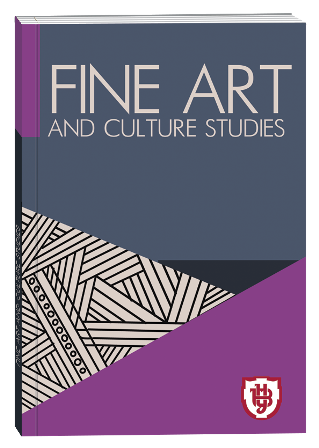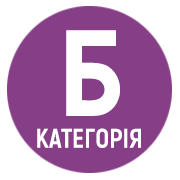INFLUENCE OF AUSTRIAN AND GERMAN ART ON THE ICONOGRAPHY OF TEOFIL KOPYSTINSKYI
DOI:
https://doi.org/10.32782/facs-2023-3-21Keywords:
Teofil Kopystinskyi, austrian art, german art, icons, achievements of European artists, influence.Abstract
The article deals with the icon painting of Teofil Kopystinskyi, a famous Ukrainian artist of the second half of the 19th – beginning of the 20th century. For almost 40 years, T. Kopystinskyi had been working in more than 100 churches and painted approximately 2,000 icons. For objective reasons, the icons stored in museums and churches located on the territory of Ukraine and outside its borders, require a multi-faceted analysis. This further emphasizes the relevance of the research topic. The purpose of the work is to determine the source base of the artist's icon painting. To achieve the purpose a methodology was used, which includes such methods of cognition as historical-systemic, historical-typological and cultural-stylistic. The article emphasizes that T. Kopystinskyi took into account the requirements of the time. The artist focused on the traditions of the local icon painting school. He was well acquainted with the works of the 13th–18th centuries and characteristic features of the iconography of Western Ukrainian lands over the centuries. The scientific novelty of the article is the disclosure of the influence of Western European art on the appearance of some icons drawn by T. Kopystinskyi. This is explained by the artist's studies in Krakow and Vienna, where he studied the achievements of outstanding artists of the past, including Peter Paul Rubens. The achievements of the Vienna, Dusseldorf, Munich and Nuremberg art schools did not remain outside his attention. Their influence on the work of T. Kopystinskyi is noticeable when studying the icons of the apostolic row of the iconostasis, as well as the place icons and icons for the high and side altars. In isolated cases, it can be traced in the works that the artist painted for churches. The conclusions. Having grown up on the soil of the ancient Ukrainian artistic culture, T. Kopystynskyi was always looking for new means of artistic expression, expanding his horizons. In the icons that he painted for many churches of Western Ukrainian lands, the traditional and the new are closely combined. Relying on Austrian and German art, the artist demonstrated in the best way new possibilities of depicting holy or biblical subjects.
References
Бѣлоусъ Ө. И. Церкви русскія въ Галиціи и на Буковинѣ въ сравненіи съ храмами и зданіями у инныхъ, преимущественно у древнихъ народовъ. Коломыя: Черенками и иждивеніемъ Мих. Бѣлоуса, 1877. 184 с.
Герій О. Культурний трансфер: стиль Корнеліса Флоріса в інтерпретації Йоганна Пфістера. Народознавчі Зошити, 2016. Зош. 5. С. 1189–1197.
Герій О. Роль західноєвропейських орнаментальних гравюр у збагаченні репертуару мотивів української іконостасної різьби XVII ст. Буття в мистецтві: збірник наукових праць і матеріалів на пошану Степана Костюка з нагоди 80-річчя. Львів, 2007. С. 168–176.
Голубець М. Сто літ галицького малярства. Галицьке малярство. Львів, 1926. С. 1–47.
Делюга В. Графічні взірці в укранському іконописі XVII–XVIIІ століть. Записки Наукового товариства імені Шевченка. Львів, 1998. Т. CCXXXVI. С. 117–126.
Ісаєвич Я. Вступ до теми: Німецькі поселення в середньовічній Західній Україні. Німецькі колонії в Галичині: історія – архітектура – культура. Львів: Манускрипт, 1996. С. 32.
Корнилій Р-й [Романовський К.]. Изъ села. Слово, 1877. Чис. 41. С. 1–2.
Купчинська Л. Творчість Теофіла Копистинського у контексті розвитку образотворчого мистецтва західноукраїнських земель другої половини ХІХ – початку ХХ століть. Львів; Філадельфія: Друкарські куншти, 2009. 314 с.
М. М. К. Изъ ателье русского художника. Галичанинъ, 1897. Чис. 289. С. 3.
Овсійчук В. А. Майстри українського барокко: Жовківський художній осередок. Київ: Наукова думка, 1991. 400 с.
П[ан] Теофіль Копистиньскій. Дѣло, 1894. Чис. 48. С. 2.
Пелех М. Іконографічні пошуки українського малярства XVII століття: До джерел інспірації. Sztuka sakralna pogranicza, 2016. T. II. S. 207–217.
Русинъ Еремій [Кобринський Й.]. Чого маемъ желати? Отъ Коломыи. Слово, 1861. Чис. 32. С. 190; Чис. 33. С. 194; Чис. 46. С. 264; Чис. 47. С. 268; Чис. 48. С. 1–2.
Свєнціцька В. Іван Руткович і становлення реалізму в українському малярстві XVII ст. Київ: Наукова думка, 1966. 156 с.
Степовик Д. В. Українська графіка XVI–XVIII століть: Еволюція образної системи. Київ: Наукова думка, 1982. 332 с.
Ткаченко М. Теофіл Копистинський. Київ: Мистецтво, 1972. 88 с.
Устіяновичь К. Н. Де що о нашôй живописи церковнôй. Дѣло, 1888. Чис. 7. С. 1–2; Чис. 9. С. 1; Чис. 10. С. 1.
Устіяновичь К. Дещо о мальованю церквей. Дѣло, 1891. Чис. 47. С. 1; Чис. 48. С. 1.
Шараневичъ И. Каталогъ археологическо-библіографичекои выставки Ставропигійского института въ Львовѣ открытой дня 10 Октобрія 1888, а имѣющой быти закрытою дня 12 Януарія 1889 по н. ст. Львовъ, 1888. 93 с.
Antonowytsch D. Deutsche Einflüsse auf die Ukrainische Kunst. Leipzig, 1942. 180 S.
Pеlеkh М. Old Testament symbolics in the Virgin’s and Chtist’s iconography in the XVIIth century iconostasises of Galicia. Spheres of Culture, 2014. Vol. 7. Р. 533–539.







